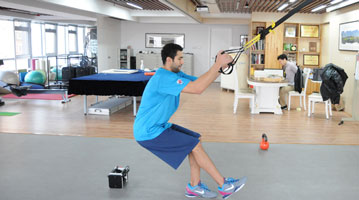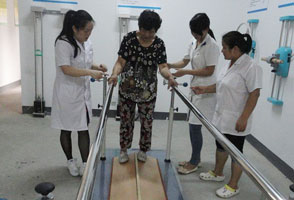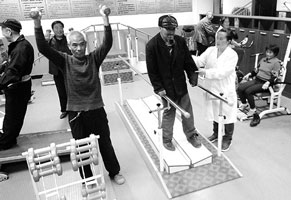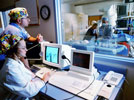|
|
|
Between
35 and 43 million people in the United States have a condition
that results in a limitation of physical activities. Annual
expense in rehab is approximately $170 billion. More than 13
million patients require some or significant assistance with
physical activity and daily living. The rehabilitation industry
continues to grow, partly because of increased lifespan and
partly advanced surgical procedures. |
|
|
|
|
|
|
|
|
Ideal
tool for Rehabilitation Assessment |
|
|
IDEEA®--
a portable gait lab is the
perfect device for rehabilitation assessment because it provides
quantitative and most accurate data for the evaluation of
functional performance, type and amount of activities of daily
living (ADL),
and assessment of postures and body motion.
|
|
|


|
|
|
The IDEEA® activity monitor provides monitoring and
assessment conveniently during the entire process of treatment
-- in the hospital or at home, daytime or evenings. The
number of gaits made, the distance traveled, the speed of the
walking and running, and the duration and intensity of stair
climbing and descending, all these can be recorded before, during
and after a treatment program, and viewed easily in numerous
ways.
|
|
|


|
|
|
The prognosis and functional level of a patient compared to
others can be visualized and reported objectively, accurately,
and conveniently with the dedicated software package and
database. An urgent request from The National Center for Medical
Rehabilitation Research is to design devices and methods that
can assess differential treatment effectiveness. IDEEA®
--
a portable gait analysis system will fit
into this application very well. We will actively engage with
researchers and clinicians and provide support for their
research, grant application, and clinical assessment.
|
|
|


|
|
|
|
|
|
Below
is the outcome of 22 TKA patients using IDEEA LifeGait
portable gait analysis system. Patients walked 40 meters twice. The
bar chart displays 6 parameters from the LifeGait gait analysis
system at pre-op, 3 and 6 months post-op.
Rate
of recovery is defined as % ratio of parameters from gait
analysis at
pre-op/3/6/months compared with controls: Step Length recovery: 67/79/86%,
Velocity: 57/72/81%, Cadence: 85/91/95%, Initial DLS: 82/96/99%,
Terminal Swing: 54/67/79%, Ground Impact: 54/72/84%. All these 6 parameters have significant
differences
between pre-op and 6 months post-op.
|
|
|

|
|
|
T is the standard deviation.
|
|
|
|








 1
1 2
2 3
3 4
4